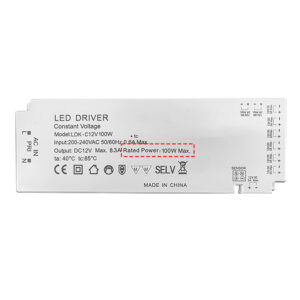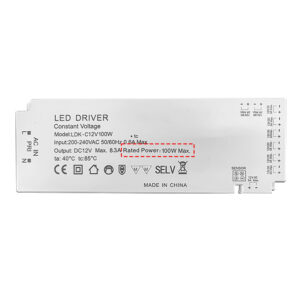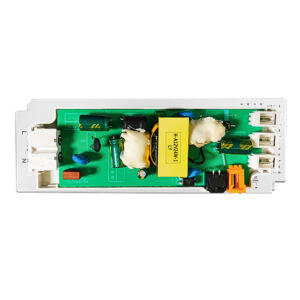LED lighting has revolutionized the way we illuminate our spaces, offering energy efficiency, durability, and a wide range of design possibilities. Behind LED lighting solution is a reliable and suitable LED driver. Constant voltage LED driver use plays a crucial role in providing a consistent and stable power supply to LED fixtures. But how to select a suitable CV LED driver for your lighting solutions ? Here are some tips that may help you to make a smart choice.
1. Voltage Compatibility
The very first and foremost consideration when choosing a constant voltage LED driver is its compatibility with the LED fixtures. CV LED drivers come in various voltage ratings, typically 12V or 24V. Make sure to match the driver’s output voltage with the rated voltage of the LED fixtures you intend to power. Using a driver with an incorrect voltage could lead to flickering, reduced performance, or even damage to the LEDs.
2. Rated Power
CV LED driver is rated in terms of power. To ensure a driver is suitable for your application, calculate the total wattage of the LED lights and related accessories, such as PIR motion sensor, which you are going to connect to the driver. Choose a driver with a rated power slightly higher than the total calculated power to provide some headroom for efficiency losses and potential future expansions.
3. Dimming Compatibility
If you plan to implement dimming functionality in your LED lighting solution, ensuring that the chosen constant voltage LED driver is compatible with the dimming method you intend to use. Some drivers support analog dimming (0-10V or 1-10V), while others are designed for digital dimming (PWM or DALI). Check the manufacturer’s specifications to confirm compatibility with your chosen dimming technology.
4. Efficiency and Energy Savings
Efficiency is a crucial factor in LED lighting solutions, as it directly impacts energy consumption and heat generation. Look for LED drivers with high efficiency ratings, as they convert more of the supplied power into usable light while minimizing wasted energy. Energy-efficient drivers not only reduce operational costs but also contribute to durability of lights by maintaining a lower operating temperature.
5. Load Matching
Constant voltage LED drivers are designed to power a specific load range. It’s essential to guarantee that the combined wattage of the LED fixtures falls within the driver’s load range. Overloading of the driver can lead to overheating and premature failure. On the other hand, choosing a driver with significantly lower wattage than your load could result in insufficient power supply and poor performance.
6. Protection Features
A high-quality constant voltage LED driver should include protection features to safeguard both the driver and connected LED lights. Look for features such as overcurrent protection, short-circuit protection, overvoltage protection, and thermal protection. These features prevent potential damage in case of unexpected electrical fluctuations or faults.
7. Reliability and Brand Reputation
Choosing LED drivers from reputable manufacturers with a track record of producing reliable and durable products. A well-known brand is more likely to provide consistent performance and better customer support in case you encounter any issues.

8. Environmental Considerations
Consider the environmental conditions in which the LED driver will be placed. If the installation location is subject to high temperatures, humidity, or other adverse conditions, choose a driver that is rated for such environments. This will ensure the longevity and stable performance of the LED driver.
Summary
Selecting a suitable constant voltage LED driver is a critical step in achieving a successful LED lighting installation. By considering factors such as voltage compatibility, power rating, dimming compatibility, efficiency, load matching, protection features, brand reputation, and environmental considerations, you can ensure that CV LED driver not only powers your fixtures reliably but also contributes to the overall efficiency and performance of your lighting setup. Taking the time to make an informed choice will pay off in the long run, resulting in a well-lit and energy-efficient environment.





